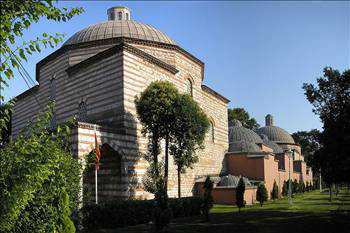 News has come of two royals rather more exotic than our own. One is perhaps the world’s most unlikely reigning monarch, a man trapped by genetic accident in a palace that has become, if not exactly a prison, then a sumptuous reminder of a burden. The other is a woman abducted, thrown over a saddle, and carried off to be a royal wife who grew to revel in intrigue and the manipulation of her menfolk.
News has come of two royals rather more exotic than our own. One is perhaps the world’s most unlikely reigning monarch, a man trapped by genetic accident in a palace that has become, if not exactly a prison, then a sumptuous reminder of a burden. The other is a woman abducted, thrown over a saddle, and carried off to be a royal wife who grew to revel in intrigue and the manipulation of her menfolk.
The first may be a reluctant king, but he is a magnificent quiz question. Here it is: What reigning monarch in South-east Asia is a trained ballet dancer and speaks fluent Czech? The answer is King Norodom Sihamoni of Cambodia, the latest in a 2,000-year-old line who, when his father Sihanouk, abdicated in 2004, was impelled by a sense of duty to abandon his life as a professional dancer and choreographer in Prague and return to the palace in Phnom Penh as king. There he carries out such royal duties – largely confined to meeting, greeting, and paperwork – as the powerful Prime Minister Hun Sen allows him. A young civil servant told the Associated Press: “On television, the leaders bow down before him, but behind his back there is no respect.”
He was nine when he was sent to Prague, and grew up there, graduating from the city’s Academy of Musical Art. He then moved to Paris, staying on after his father’s restoration to the throne in 1993, and he taught, performed, and choreographed classical ballet and Cambodian dance, as well as working for Unesco, the UN’s cultural arm. Unlike his showman father, who had six wives and numerous lovers, he is quiet, contemplative, and never married. He often dines alone, and then retires to watch DVDs of operas and ballets. His voracious reading includes Czech theatre reviews – a reminder, one suspects, of where he would rather be.
Separated from Sihamoni by the centuries, and by the relish she had for her royal status and what came with it, is our second royal, Roxelana, the wife of Ottoman Sultan Suleyman the Magnificent. She was born Aleksandra Lisowska, the daughter of a Russian Orthodox priest, in the Ukraine, but some time around 1520 a raiding party of Crimean Tartars rode into town, and carried her off. She was sold as a slave in Constantinople – now Istanbul – entered the harem, and took the fancy of Suleyman, who later made her his fourth wife.
Her reputation is that of a devious player of courtly politics, advancing the claims of her son, Selim, to the Ottoman throne. His eight-year reign as sultan, beginning in 1566, was a disastrous time, notable for the invasion of Cyprus and the massacre of 30,000 islanders, plus his addiction to drink so chronic that he became known as Selim the Sot. But Roxelana was a more considerable character than some historians have allowed. She founded mosques, schools, a women’s hospital, and, in Jerusalem, a soup kitchen for the poor. There was also a bath house built in her name, and it is this which has brought her into focus now.
Roxelana’s hamam, a long, domed structure between the Blue Mosque and the Haghia Sophia in Istanbul, was completed in 1557, just a year before her death. No one knows whether she used the hamam herself, and some think it was built so that bathers could pray for her health. But, gradually, the bathhouses which had once been so central to the life of the city fell out of use. Roxelana’s ceased working in 1906. It finally became, of all undignified things for a royal hamam, a carpet showroom. Then, in 2007, the city decided to restore it, and it is now opening to the public. Visitors can, for a fee of about £76, sample the steam bath, peeling, and soap massage in a marbled, alcove-filled interior built for the favourite wife of one of the greatest Ottoman sultans.
via David Randall: The reluctant king and the bathhouse queen – Commentators, Opinion – The Independent.

Leave a Reply